Here's some visual references for shoes and boots of the early 1860s. These are mostly civilian examples, but there's some (er, one) military as well.
Let's start with the ladies. Ankle-high boots or "gaiters" are very popular in this period. The may be fastened up the front with laces, or up the side with laces, elastic gussets ("congress gaiters"), or buttons. Non-functional buttons may also be present on a slip-on elastic boot; I've seen no examples of laced shoes with decorative buttons.
Every Lady Her Own Shoemaker (1856) recommends the front lacing style for those who wear their shoes out unevenly--the shoes may be made on a 'straight last' with no left or right, and then can be worn on either foot, prolonging the wearing life of the shoe.
 |
| Leather shoe, c. 1860-79, from The Met |
 |
| Embroidered (wool on canvas) boots with elastic gusset, c.1845-65, VAM |
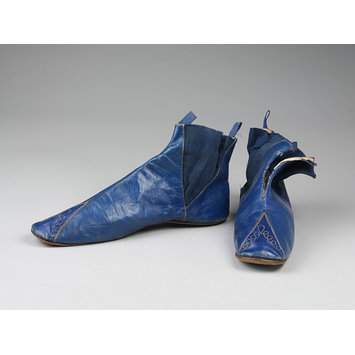 |
| Women's leather/elastic boots, c. 1860s, VAM |
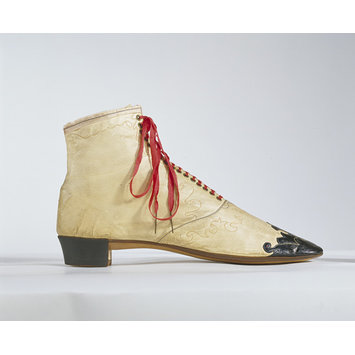 |
| Leather boots with contrasting "foxing" or "toe cap", 1850s, from the VAM |
The tall boots often called "Victorian" are primarily from later in the 19th century (or even the 20th). Still, there are mid-century examples of ladies' boots of which rise somewhat above the ankle-not all the way up the calf, but above the ankle.
 |
| Wool boots, c. 1865-75, from The Met |
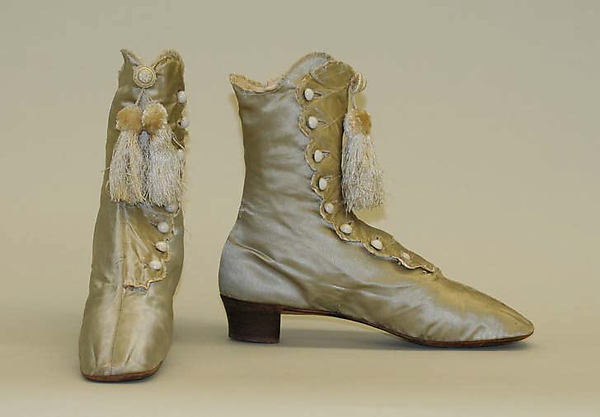 |
| Wedding shoes, likely of silk, 1865, from The Met |
Lower styles are also worn, particularly for in-home and formal wear (though boots may also be used for these occasions-consider those lovely silk ones above). The prevailing shoe fashion frequently has open tops (ala "slippers"/ "ballet flats"), low or no heel, and rounded, square or shallow pointed toes--none of those extreme modern, angled points. The shoes may be slip-on, or have straps across the ankle, or ties that criss-cross.
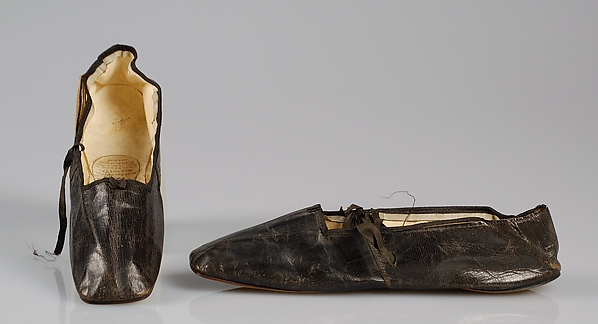 |
| Leather slippers, c. 1845-65, from The Met |
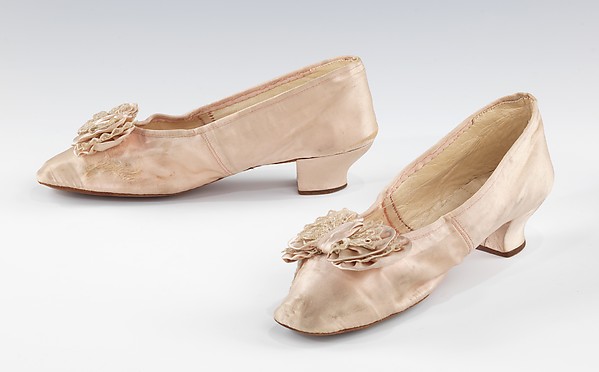 |
| Silk evening slippers, 1855-65, from The Met |
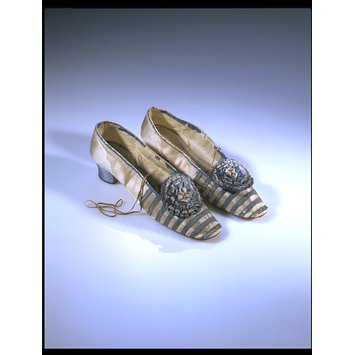 |
| Silk satin shoes, c. 1855-65, from VAM |
Materials include silk, leather, and wool for the uppers, with leather soles. The originals I've looked at had silk uppers with linen or cotton linings underneath. Every Lady Her Own Shoemaker mentions that a wide variety of materials may be used--with linings under the lighter weights and leather foxing to extend the wearing life--particularly that left-over dress fabric be employed to make matching shoes.
For a whimsical finish, here are a pair of velvet and rabbit fur carriage shoes (warm shoes to wear while travelling), with quilted silk for extra warmth:
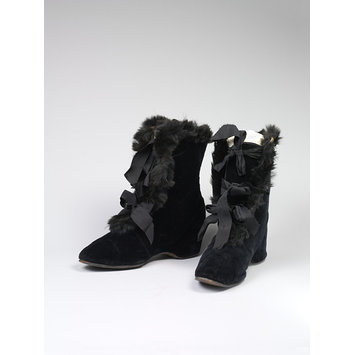 |
| Lady's Carriage Boots, c. 1850s, VAM |
And now for the gents (thank you for your patience!) I'm afraid that examples of men's shoes a little harder to find by my usual methods. They are out there, however, such as these leather brogans which were reportedly worn by a POW returning home after the Civil War.
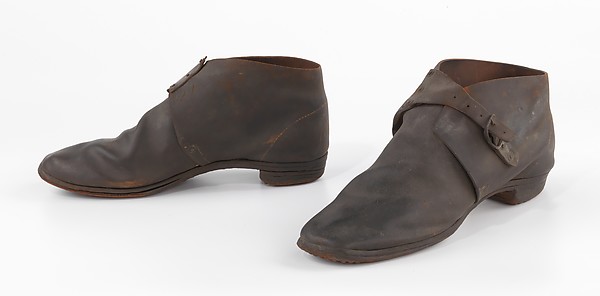 |
| Men's brogans, c. 1860-65, from The Met |
In civilian-land, both shoes and boots are available: leather is a popular material, but fabric may also be used (such as the cotton velvet referenced
in this story). As with women's shoes, fabric uppers may be protected by leather toe caps or foxing.
Consider these "opera boots" for formal-wear:
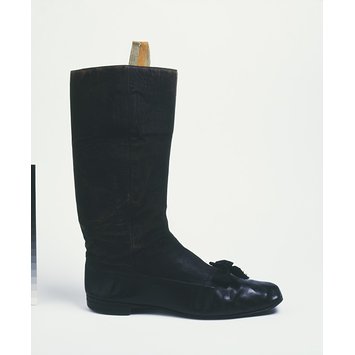 |
| Opera boots, 1840s, from the VAM |
Top boots are apparently useful for riding, walking, and general wear:
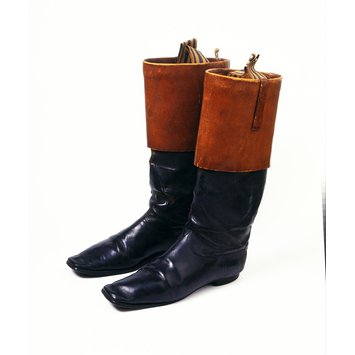 |
| Men's Top Boots, 1840s, VAM |
There are also shorter boots available, such as these eye-catching snake skin and patent leather ones:
 |
| Men's short boots (leather/snake skin), c. 1851, from VAM |
Children's shoes end up looking like tiny versions of mom's shoes, noting that the ankle-strap is very common on open-top shoes. Silk, cloth, leather, and velvet are among the materials used.
 |
| Silk baby bootees with tatted decoration, early 19th century, VAM |
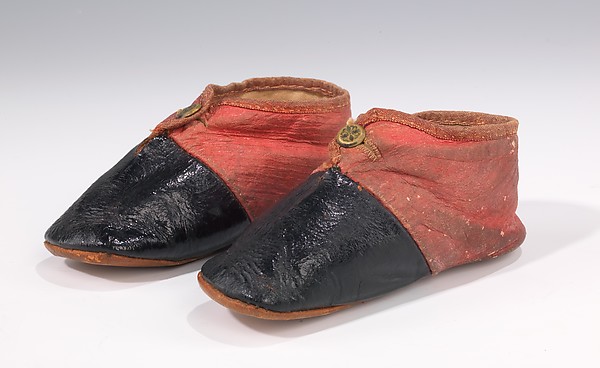 |
| Infant shoes, c. 1860, from The Met |
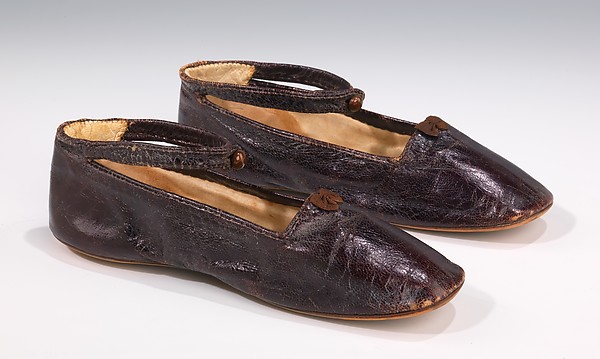 |
| Leather shoes (about a modern toddler size 10), c.1850-69, from The Met |
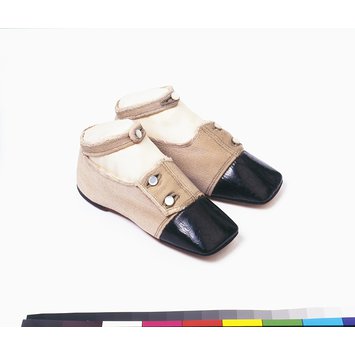 |
| Children's shoes, c. 1851, cloth and patent leather, from the VAM |
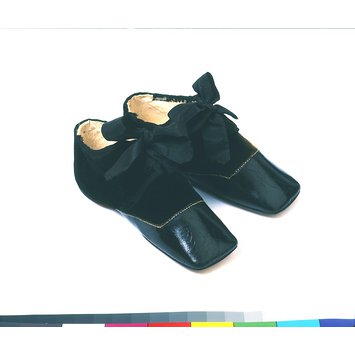 |
| Children's shoes, c. 1851, velvet and patent leather, from the VAM |



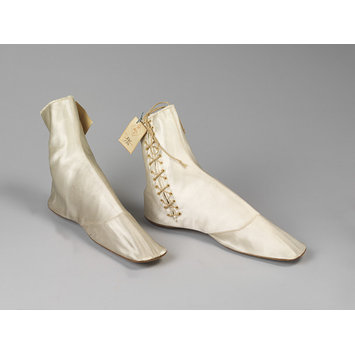





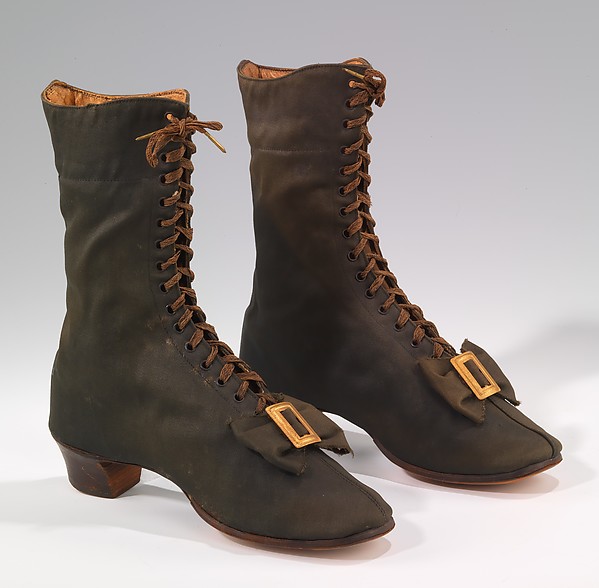


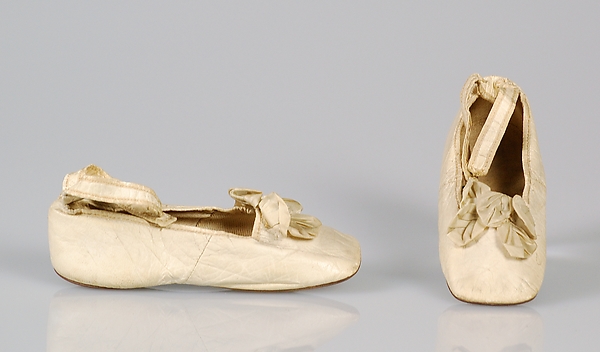












No comments:
Post a Comment